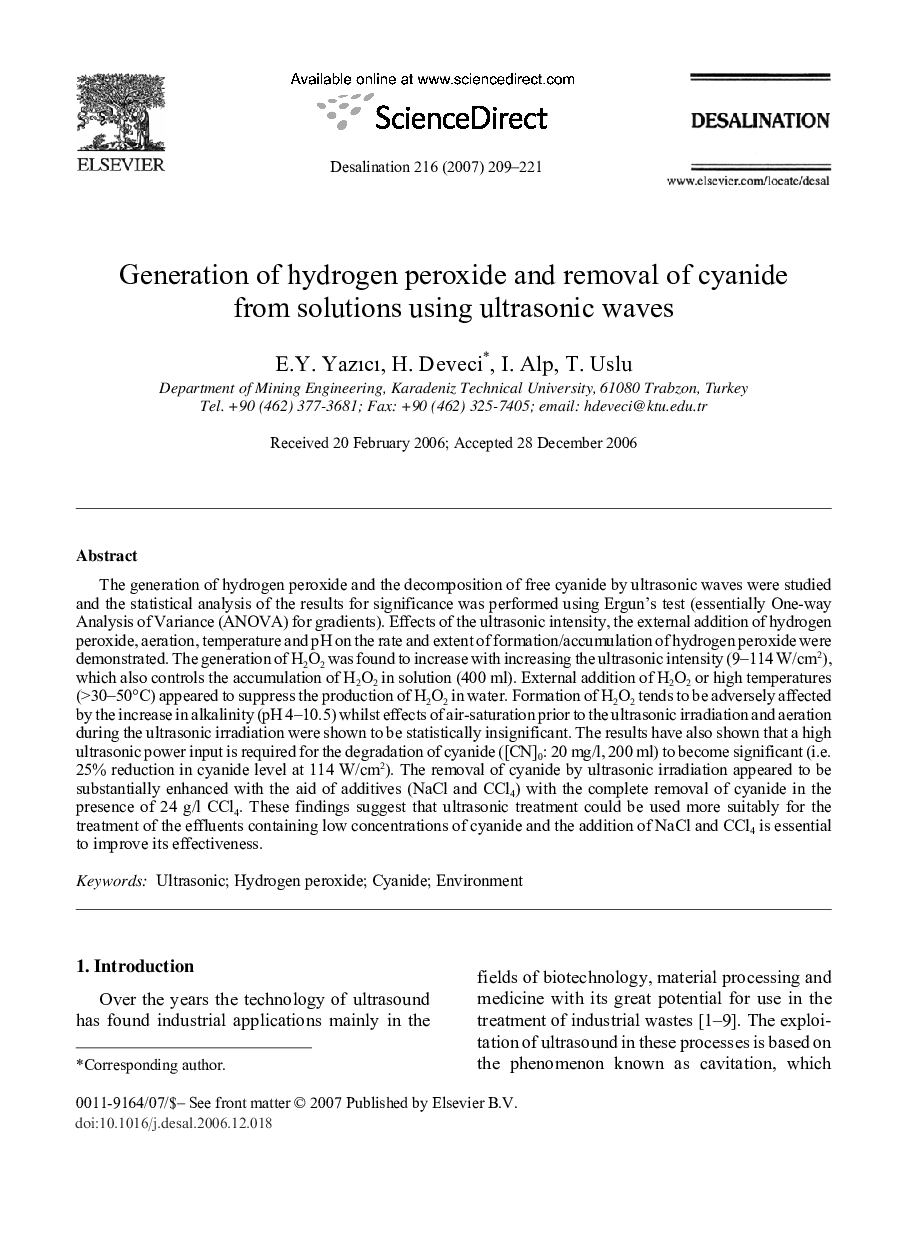| Article ID | Journal | Published Year | Pages | File Type |
|---|---|---|---|---|
| 627850 | Desalination | 2007 | 13 Pages |
The generation of hydrogen peroxide and the decomposition of free cyanide by ultrasonic waves were studied and the statistical analysis of the results for significance was performed using Ergun's test (essentially One-way Analysis of Variance (ANOVA) for gradients). Effects of the ultrasonic intensity, the external addition of hydrogen peroxide, aeration, temperature and pH on the rate and extent of formation/accumulation of hydrogen peroxide were demonstrated. The generation of H2O2 was found to increase with increasing the ultrasonic intensity (9–114 W/cm2), which also controls the accumulation of H2O2 in solution (400 ml). External addition of H2O2 or high temperatures (>30–50°C) appeared to suppress the production of H2O2 in water. Formation of H2O2 tends to be adversely affected by the increase in alkalinity (pH 4–10.5) whilst effects of air-saturation prior to the ultrasonic irradiation and aeration during the ultrasonic irradiation were shown to be statistically insignificant. The results have also shown that a high ultrasonic power input is required for the degradation of cyanide ([CN]0: 20 mg/l, 200 ml) to become significant (i.e. 25% reduction in cyanide level at 114 W/cm2). The removal of cyanide by ultrasonic irradiation appeared to be substantially enhanced with the aid of additives (NaCl and CCl4) with the complete removal of cyanide in the presence of 24 g/l CCl4. These findings suggest that ultrasonic treatment could be used more suitably for the treatment of the effluents containing low concentrations of cyanide and the addition of NaCl and CCl4 is essential to improve its effectiveness.
